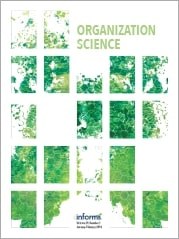
Parker, \SimonC.\ and \van Witteloostuijn\, A. (2010). A General framework for estimating multidimensional contingency fit Organization Science, 21(2):540--553.
-
Affiliated author
-
Publication year2010
-
JournalOrganization Science
This paper develops a framework for estimating multidimensional fit. In the context of contingency thinking and the resource-based view of the firm, there is a clear need for quantitative approaches that integrate fit-as-deviation, fit-asmoderation, and fit-as-system perspectives, implying that the impact on organizational performance of series of bivariate (mis)fits and bundles of multiple (mis)fits are estimated in an integrated fashion. Our approach offers opportunities to do precisely this. Moreover, we suggest summary statistics that can be applied to test for the (non)significance of fit linkages at both the disaggregated level of individual bivariate interactions, as well as the aggregated level of groups of multivariate interactions. We systematically compare our approach with extant alternatives using simulations, including the fit-as-mediation alternative. We find that our approach outperforms these established alternatives by including fit-asmoderation and fit-as-deviation as special cases, by being better able to capture the nature of the underlying fit structure in the data and by being relatively robust to mismeasurements, small sample sizes, and collinearity. We conclude by discussing our method's advantages and disadvantages.